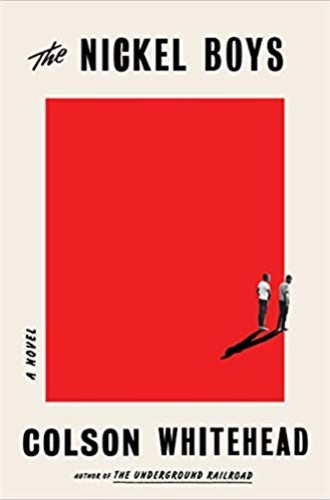Mr. Hill was a good history teacher, Colson Whitehead writes, because he guided students to the present, “linking what had happened a hundred years ago to their current lives. . . . It always led back to their doorsteps.” Whitehead’s newest novel also delivers history to readers’ doorsteps, dramatizing a horrifying piece of America’s past.
The novel is a friendship story between two boys, Elwood and Turner, as they face the terrors of a reform school named Nickel Academy. Nickel is based on the real history of Dozier School for Boys in Marianna, Florida. Whitehead draws on the stories of men who were traumatized by their time at Dozier and have since organized to hold the state responsible. The group is called the White House Boys, named after the white shed where they were beaten. In its hundred-plus years of operation, Dozier had a reputation for beating, raping, and even murdering students. Today, officials are still analyzing graves on the school grounds to determine the causes of death.
Before he lands at Nickel, Elwood is an idealistic black teenager living in the Jim Crow South of the 1960s. As a boy, he obsessed over Martin Luther King Jr.’s speech recorded in 1962 at Zion Hill Baptist Church in Los Angeles, and he spends a lot of time thinking about dignity and moral principles. Raised by a strict grandmother, he is often noticed by white men for his “industrious nature.” He begins to see how his principles grind against the real world when he gets jumped after scolding his peers for swiping candy in the cigar store where he works. He finds an outlet for his convictions by participating in civil rights protests. He ambitiously enrolls in classes at a nearby technical school.
Present-day stories of unarmed young black men being violently apprehended or worse by the police come to mind when Elwood is caught up in the whirl of a “wrong place, wrong time” incident while on his way to his first day at college. A borrowed ride in a stolen car is enough to send him to Nickel.
There, Elwood meets Turner, who unlike him possesses an “eerie sense of self . . . always simultaneously at home in whatever scene he found himself and also [feeling] like he shouldn’t have been there.” Turner teaches Elwood how to stretch their working hours away from the school as much as possible. Elwood learns that Turner grew up mostly without parents and was once accused by a black coworker of “shucking and jiving for these white people,” an accusation that caused him eventually to snap in rage. That’s how he ended up in Nickel. Turner sees the school from a streetwise standpoint, “neither hustler nor mark, outside the game but knowing all its rules.”
The boys become twin pillars of the story. Every time Elwood manages a step forward in navigating Nickel’s arbitrary system, Turner is there to explain why he is getting pushed back.
Nickel itself is a grotesque microcosm of the outside world. “In here and out there are the same, but in here no one has to act fake anymore,” explains Turner. “You got to see how people act, and then you got to figure out how to get around them like an obstacle course.”
At Nickel, there are whipping sheds and iron rings screwed into trees. There are haunted dolls and invisible boys groaning behind curtains. There is blood. The white and black boys are segregated, marginally aware of the others’ experiences, although it’s clear from the beginning the black half of campus is more derelict and the boys receive grimier work details and skimpier food. The campus graveyard looms over the black boys, who notice that their peers disappear from time to time.
Bibles are casually strewn beside whips. Elwood is unsettled by a brusque nurse reading to an ailing boy: “It sounded how people sound when they have God in their mouth.” All the while, Dr. King’s oratories scroll through Elwood’s head. He tries to keep his head down and fights the urge to resist, remembering King’s words, “Darkness cannot drive out darkness.” King’s teaching of agape torments him: “Do to us what you will and we will still love you.”
Whitehead works his narrative around this maze of hope and disillusion. He blends a tone of exposé with intricate scene building and staggering sentences: “Pain rolled off him like rain from a slate roof.”
Whitehead resoundingly brings history back to our doorsteps. As scientists continue digging for answers on the Dozier school grounds, Whitehead is right beside them. He unearths the hard bones of unexplained and unsung history in an act not only of artistic genius but also of sheer generosity. The fictional boys call back to their real counterparts and haunt us with this fact: the struggle for civil rights is not history but as present as it’s ever been.






